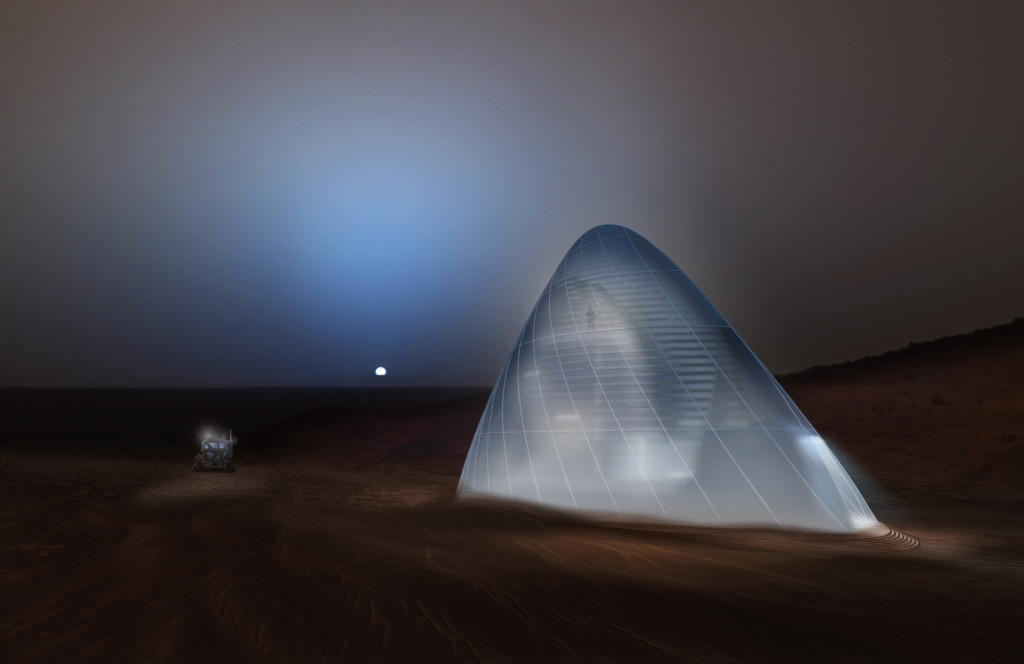A house built with a 3-D printer on Mars, now it’s possible

nasa.gov
The recent discovery of water in solid state on Mars set off this project to colonize the red planet and mostly to examine its subsoil. Indeed, the Nasa and the Amerika Makes allocated 2,25 million dollars to reach two goals: the project and the construction of a house through a 3-D printer which is intended to study the geological structure of the planet. The house has to be made by a mixture of recyclable materials and typical materials of Mars.
The winner of the contest is the “Team Space Exploration Architecture and Clouds Architecture Office”, from New York with its ‘Mars Ice House’ project. The rewards are 25.000 dollars and, above all, the possibility to fulfill their project sending their team on Mars. Nasa analyzed several factors: architecture, design, fitting for habitation, innovation, functionality, site selection, the possibility to build it through a 3-D printer.
But how this Mars Ice House is made?

Its name calls to mind the concept that inspired the team, that is ‘to follow the water’: they chose an area of the planet where there was abundance of water. This helped them to obtain vegetable and human sustenance but, above all, to have constantly the availability of their raw material, once that the house will be ‘printed’, that is ice.
The structure rises imperiously from subsoil bringing light inside and creating a vision with the external landscape; in doing so mind and eyes stay in shape. The team chose ice as their fundamental element because it has the ability to filter the sun’s rays and to protect against external radiation.
The core structure is based on the ‘Lander’, a landing vehicle covered with a EFTE inflatable membrane. The EFTE is a light plastic and transparent material, which is resistant to corrosion and high temperatures. The Lander is externally protected by an intermediate zone whose goal is to make the external-internal passage less sudden. The vehicle extends vertically for four layers and it contains every spatial cell designated to mechanic services and everyday life: laboratories, exercise rooms, libraries, kitchen, bedrooms. The four layers are linked to a winding staircase which allows the equipment to do physical exercise. A garden extends for four layers too, which divides a facade of the Lander from the intermediate zone, whose goal is to provide an oxygen and food supplement for the crew. Besides, it also provides a psychological benefit breaking the monotony of the ice, thanks to its green.
The Intermediate Zone is very important, thermally separated from the Lander. Its goal is to create a neutral zone that is not entirely interior or exterior, it enables the astronauts to experience the “outside” without ever donning an EVA suit. This zone is constituted by ice, has the same pressure as the internal one and, besides, has small robots that reflect and concentrate light coming from outside on the surface of the Lander, making more comfortable to live within.
We all hope that this revolutionary project will take shape. You can admire it watching this video.
Massimiliano Russo
Header Image Credits: nasa.gov
